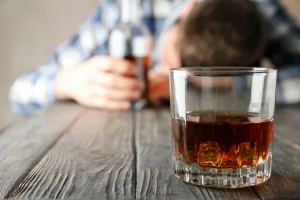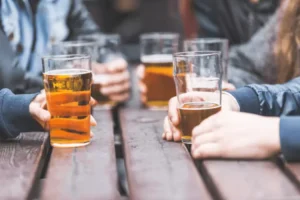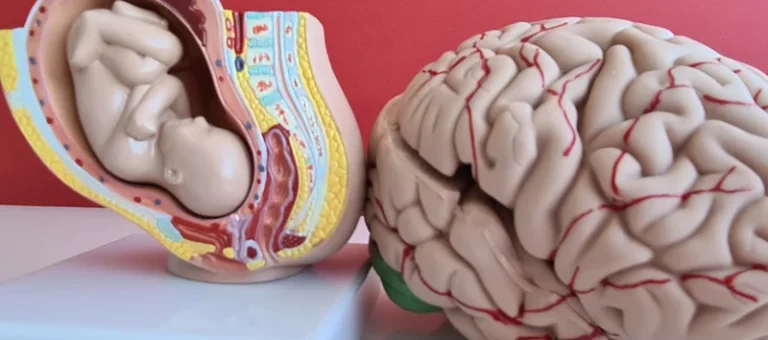Find Drug And Alcohol Rehab In New York

It can result in drug abuse in athletes, of medications like anxiolytics and antidepressants. The health risks of drug abuse in athletes and the unfair advantage experienced by them were significant enough to induce the formation of the World Anti-Doping Agency in 1999. The NFL began testing players for human growth hormone in 2014 but caught no players using it the first year, and it’s unclear how many have been caught ever since.
Alcohol Use Disorder in Australia Ausmed
With theta burst, there is some data to support impaired alcohol intake as well as the potential modulation of signals induced by drugs in cortex areas involved in dependence [62,63]. In the transcranial direct current studies, the results have been tepid at best with the most recent metanalysis revealed small positive effects on alcohol craving and consumption which contradicted a previous metanalysis [64,65]. One RCT performed recently demonstrated higher rates of abstinence in those treated with tDCS compared to other conditions but only for two weeks post rehabilitation [66].

Peak performance?

Much of this is idealistically accomplished by working alongside athletic trainers; this is a major component of keeping athletes safe. A lot of what is known about the acceptable levels of sports trauma–induced pain comes from the recovery phase of those activities. Many banned drugs are very safe when prescribed by a doctor for a specific health reason. However, these medicines are not approved for use by healthy people, in higher doses or in combination with other substances. Participation in sports is more likely to produce performance anxiety and panic disorder, as well as phobic anxiety following an injury.
Methods to increase oxygen transport
- Doping groups responded by introducing micro-dosing of PEDs that would show only minor variations in biological values while still giving athletes performance benefits.
- Side effects include appetite increase, balance and coordination impairment, concentration loss, drowsiness, motivation loss, panic attacks, and weight gain.
- In the only study to look at theta burst in nicotine users, abstinence rates were increased three months post treatment but cravings were unchanged [45,75].
- The testing started on a small scale, but it was not long before it claimed its first doper, Swedish modern pentathlete Hans-Gunnar Liljenwall.
The fundamental principle of the athlete biological passport is based on the monitoring of selected parameters over time that indirectly reveal the effect of doping, as opposed to the traditional direct detection of doping by analytical means. This concept gained momentum as a result of questions raised during the 2006 Olympic Winter Games surrounding suspensions of athletes by their federations following health checks that reported high hemoglobin levels. An athlete’s passport purports to establish individual baseline hormone/blood levels, which are monitored over time for significant changes. A positive test result would consist of too dramatic a change from the established individual baseline. This approach is intended to protect athletes from false-positive tests resulting from naturally occurring high levels of endogenous substances, while catching those attempting to cheat by using naturally occurring substances. In 1998, police found a large number of prohibited substances, including ampoules of erythropoietin, in a raid during the Tour de France.25,26 The scandal led to a major reappraisal of the role of public authorities in anti-doping affairs.
These estimates are consistent with several anecdotal reports in the popular press estimating that performance-enhancing drug use rates are relatively high among elite adult athletes, particular in certain sports (e.g., American football or track and field). The International Association for Athletics Federations banned all Russian athletes from international competitions in 2016, including the Olympics. In 2018, the International Olympic Committee banned Team Russia from the Winter Olympics, allowing Russian athletes to compete independently under the neutral Olympic flag. Even athletes who were not part of the doping system suffered reputational and economic damages. Many of those who were implicated received competition bans up to four years.
AddictionResource fact-checks all the information before publishing and uses only credible and trusted sources when citing any medical data. The Verified badge on our articles is a trusted sign of the most comprehensive scientifically-based medical content.If you have any concern that our content is inaccurate or it should be updated, please let our team know at [email protected]. In addition to these drugs, there are thousands of supplements on the market that can enhance performance.
Doping among amateur athletes like CrossFitters is probably more common than you’d think
Several studies have shown that drug testing serves as a deterrent to banned substances (Coombs & Ryan, 1990; Dunn, Thomas, Swift, Burns, & Mattick, 2010), and may partially account for relatively low prevalence rates of certain illegal drugs. However, one study among adolescents in the United States showed that randomized testing reduced drug use but increased other risk factors for use, such as perceived norms and less risky beliefs about drug use (Goldberg et al., 2003). Further, if athletes are aware of their testing schedule, they may be able to organize their use around times when it would not trigger a positive test. Fear of a positive drug test almost certainly inhibits short-term drug use for some athletes, but the degree to which drug testing provides a more general impact on the substance use habits of athletes is more difficult to determine. As sport and anti-doping drive harsher policies, more invasive surveillance techniques, and push the cultural narrative around ‘clean sport’, doping groups have responded with techniques for avoiding detection and keeping overall risk as low as possible. In order to understand how enabling environments are produced we must consider those instances where the environment has been altered in order to reduce the social, political, economic, and physical risks of doping.
Doping enabling processes and environments
Ten players per team are randomly tested each week, which continues during the playoffs for teams in the postseason. Simply put, many of the drugs athletes take illegally are designed to increase their drug use in sports athletic performance. Even if a PED is originally used for injury or surgery recovery, the drugs’ effects can be addictive and lead to more long-term use and unfair advantage in competition.

Should Performance-Enhancing Drugs and Technologies Be Allowed in Sports?

In 1989, Atlanta Falcons offensive lineman Bill Fralic testified to Congress that an estimated 75% of linemen used steroids then, before the NFL began testing and punishing offenders for it later that year after banning it in 1983. To catch cheaters, Tygart said the best anti-doping methods involve the global standard of intelligence-driven testing, not random testing, which is a core part of the NFL PED policy. The use of performance-enhancing https://ecosoberhouse.com/ drugs may, in a range of cases, more closely resemble running with a tailwind than mastering a new athletic skill. A sprinter who runs with a tailwind, a marathon runner who rides the subway, or a high jumper who uses a trampoline are not better placed to explore the limits of human potential in their respective sports. You can help reduce your risk of winter sports injuries with planning, preparation and proper equipment.
